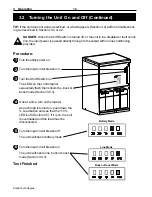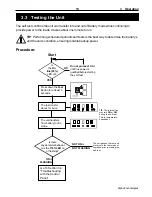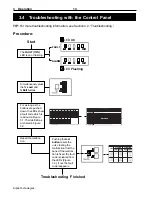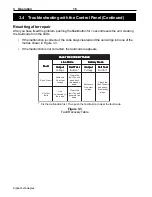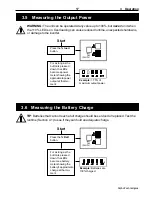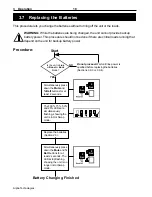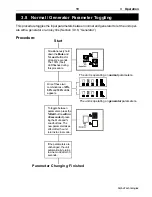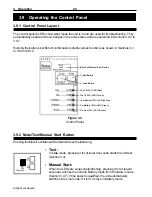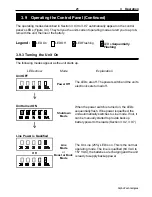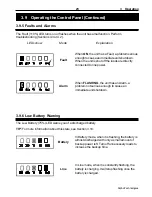
3 Operation
26
Alpha Technologies
3.10 Battery Discharge States
The batteries go through several states as it powers the loads (Figure 3.6). Knowing how long
they last for your conditions will help you manage the loads when the line is unqualified.
1) Battery Mode
The unit provides backup battery power to the loads. How long it stays in battery mode
depends on the size of the loads and the capacity of the batteries. Perform a run-time test
(Section 4.1) to learn how long the batteries can power your loads.
2) Low Battery Warning
The batteries supply the loads but they are almost discharged and cannot supply them much
longer.
TIP:
The operator should turn off unnecessary loads to extend battery backup time.
3) Low Battery Shutdown
The batteries are fully discharged and can no longer support the loads. They have enough
power to keep the unit’s monitoring and control circuits active. This state can last several
days, depending upon battery capacity.
4) Low Battery Disconnect
The unit is shut off to protect the batteries from a damaging deep discharge. It stays off until
qualified line power or a backup generator is available at the input or fresh batteries are
connected.
1) Battery Mode Starts
NOTE: The battery voltage level
drops when the load is connected to it.
3) Low
Battery
Shutdown
2) Low
Battery
Warning
4) Low
Battery
Disconnect
(At Aprx. 42 VDC)
NOTE: The battery voltage
level rises when the load
is disconnected from it.
On Battery (50%) LED ON
All LEDs OFF
LEDs Sequentially Flashing
-Low Battery (75%) LED Flashing
-On Battery (50%) LED On
B
at
ter
y V
o
lt
age
53 VDC
42.5 VDC
Time
NOTE:
Not to scale. Perform a battery backup time test (Section 4.1) to learn how long each state lasts for your operating conditions.
Figure 3.6
Battery Discharge States

